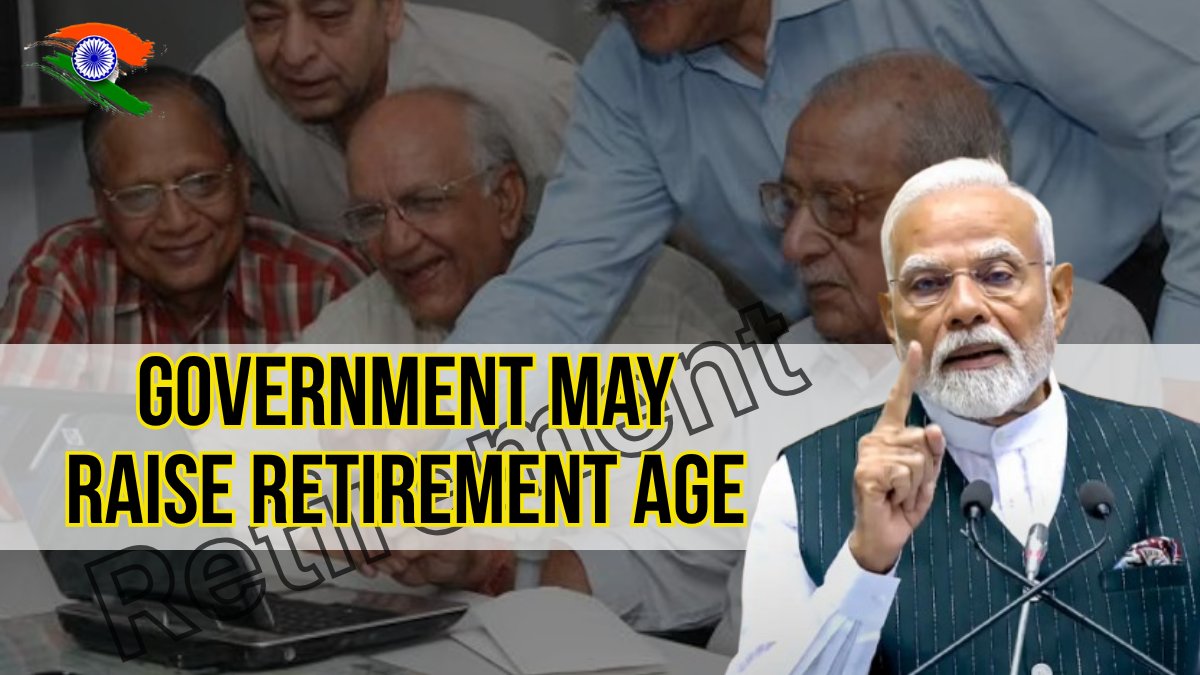The Indian government is actively considering a substantial change to the retirement policy that could impact millions of public sector employees across central and state administrations. With increased life expectancy, rising economic pressures, and the need for experienced professionals in critical departments, the government is exploring the possibility of increasing the retirement age from the current 60 years to anywhere between 62 and 65 years.

This comprehensive review outlines the reasons behind the proposal, the potential benefits and challenges, as well as the broader national and international context of retirement policy trends.
Summary Table: Proposed Retirement Age Reform in India
| Aspect | Details |
|---|---|
| Proposed Policy Change | Increase in retirement age for government employees |
| Current Central Govt. Retirement Age | 60 years |
| Proposed Retirement Age | 62-65 years (depending on role and department) |
| Key Motivation | Longer life expectancy, skill retention, fiscal sustainability |
| Affected Groups | Central and State government employees, medical and technical staff |
| Status | Under active consideration, no official implementation yet |
| Comparable Global Examples | Japan (65), USA (67), UK (66), Australia (67), France (64) |
| Official Website | https://www.persmin.gov.in |
Current Retirement Framework in India
India’s existing retirement age policies differ across various government sectors. Below is a snapshot:
- Central Government Employees: Retire at 60 years
- State Government Employees: Vary by state, most at 60 years
- University Professors: Retire at 65 years
- Judges (High Court/Supreme Court): 62 to 65 years
- Armed Forces: Varies from 52 to 60 based on rank
- Medical Staff: Often 62-65 years depending on state policies
- Scientists/Researchers: Some institutes extend up to 65 years
Why the Change is Being Considered
Demographic and Economic Trends
- Increased Life Expectancy: Indians are living healthier, longer lives.
- Skill Shortages: Many departments face a dearth of experienced professionals.
- Global Practices: Other countries have already adapted to similar demographic realities.
- Pension System Pressure: Extending work life could reduce fiscal burden on pension systems.
Proposed Changes and Strategies
- Raise Retirement Age: From 60 to 62 or 65 years across key government services.
- Phased Rollout: Starting with critical departments such as healthcare and education.
- Voluntary Extensions: Allow performance-based extensions to retain top talent.
- Complementary VRS Plans: Voluntary Retirement Schemes may be offered to balance promotions.
State-Level Variations and Reactions
| State | Current Age | Change Status | Remarks |
| Tamil Nadu | 60 | Under consideration | Proposal to increase to 62 |
| Madhya Pradesh | 62 | Already implemented | – |
| Uttar Pradesh | 60 | No change yet | Awaiting central decision |
| Andhra Pradesh | 62 | Sector-specific | For healthcare professionals |
| Kerala | 60/62 | Varies by department | Sector-tailored |
Benefits of Raising Retirement Age
Administrative and Economic
- Skill Retention: Keeps experienced professionals longer in service
- Pension Deferral: Delays government pension liability
- Reduced Attrition: Stabilizes public sector workforce
- Mentorship: Enables transfer of knowledge to younger employees
Sector-Specific
- Healthcare: Meets demand for experienced doctors and nurses
- Education: Retains veteran professors and researchers
- Administration: Preserves governance continuity
Challenges and Concerns
Employment Impact
- Youth Unemployment: Fewer job openings for fresh graduates
- Promotion Bottlenecks: Delays in career advancement for junior staff
- Innovation Barriers: Risk of limited new perspectives in leadership
Operational Issues
- Productivity Monitoring: Ensuring continued high performance
- Health Limitations: Some roles may not suit extended age workers
- Policy Alignment: Synchronizing retirement age across diverse sectors
Financial Implications
For Employees
- Longer salary tenure
- Larger pension corpus
- Delayed gratuity
- Modified retirement planning timelines
For Government
- Reduced short-term pension payouts
- Prolonged salary and benefits costs
- Increased healthcare obligations
Global Retirement Trends
| Country | Public Sector Retirement Age | Trend |
| Japan | 65 | Rising |
| USA | 66-67 | Gradual Rise |
| UK | 66 (to 67 by 2028) | Rising |
| Australia | 67 | Increased |
| France | 64 | Recently Revised |
| Germany | 65-67 | Rising |
These examples reflect a global move toward extending professional engagement in line with longer life spans and economic needs.
Implementation Considerations
- Phased Rollout: Begin with essential departments
- Performance Benchmarks: Consider evaluations for tenure extension
- Flexible Options: Voluntary vs mandatory extensions
- Awareness and Training: Educate employees about new systems
- Coordination Across Sectors: Central and state harmony
Stakeholder Reactions
- Government: Supportive of fiscal and productivity gains
- Employee Unions: Mixed views; some welcome extended tenure while others highlight promotion concerns
- Youth Groups: Worried about limited job openings
- Economists: Largely supportive due to pension benefits
Action Steps for Employees
- Stay Informed: Track official updates from ministries
- Reassess Financial Plans: Adjust savings and retirement timelines
- Understand Department Policies: Some may implement earlier
- Engage with Associations: Represent concerns or preferences
Frequently Asked Questions (FAQs)
Q1. Has the government officially increased the retirement age?
A1. No official confirmation has been issued yet. Discussions are ongoing at multiple levels.
Q2. When is the change expected to be implemented?
A2. If approved, changes may begin in late 2025 or in a phased manner starting earlier.
Q3. Will this change apply to all government employees?
A3. Not necessarily. The policy may vary by department, role, and state.
Q4. Will employees have a choice to retire at 60?
A4. Voluntary retirement options may be included to provide flexibility.
Q5. What should I do to prepare for the change?
A5. Monitor official updates, revise financial plans, and consult your HR department for guidance.
Conclusion
India’s contemplation of raising the retirement age represents a critical policy pivot aimed at aligning with changing societal, demographic, and economic realities. With proper planning, stakeholder engagement, and phased implementation, this reform could benefit both the government and its employees.
As discussions evolve, it’s vital for affected employees to remain proactive, informed, and prepared to adapt their personal and professional strategies.
Official Website for Updates: https://www.persmin.gov.in
Click here to know more



